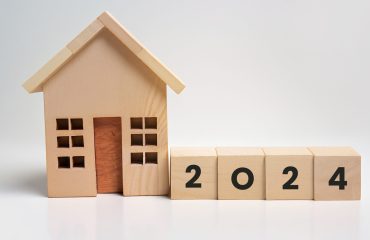
Home improvement is no longer just about curb appeal, it’s about creating spaces that are both beautiful and environmentally responsible. With climate change, rising energy costs, and urban flooding becoming growing concerns, more U.S. homeowners are seeking eco-friendly paving solutions. Sustainable paving not only enhances your home’s value and style but also helps conserve resources and reduce your carbon footprint.
In this guide, we’ll explore the best sustainable paving materials, compare their costs and durability, and give you practical tips to choose the right eco paving option for your home.
What Makes Paving Eco-Friendly?

Eco-friendly paving focuses on using sustainable, durable, and low-impact materials that help protect the environment. Unlike traditional concrete or asphalt which can contribute to stormwater runoff, heat absorption, and high carbon emissions, green paving solutions are designed to work with nature, not against it.
These alternatives offer several key benefits:
- Improved Stormwater Management – Permeable materials allow rainwater to filter through the surface, reducing runoff and helping replenish groundwater supplies.
- Reduced Carbon Footprint – Many sustainable pavers are made from recycled or locally sourced materials, minimizing production energy and emissions.
- Better Energy Efficiency – Light-colored or reflective surfaces reduce heat absorption, lowering the urban heat island effect and keeping outdoor areas cooler.
- Enhanced Property Value – Eco-conscious upgrades appeal to modern homeowners and can increase curb appeal and long-term property value.
Why Choose Eco-Friendly Paving?

Traditional paving methods like asphalt and non-permeable concrete often worsen environmental problems. They contribute to stormwater runoff, increase heat absorption, and use energy-intensive materials.
Eco-friendly paving, on the other hand, offers clear advantages:
- Environmental benefits: Allows water infiltration, reduces flooding risks, and lowers carbon emissions.
- Economic value: Many sustainable materials are cost-competitive and last longer, saving you money in the long run.
- Home value boost: Eco paving improves curb appeal and aligns with modern sustainability trends, attracting future buyers.
Popular Sustainable Paving Materials
1. Permeable Concrete & Asphalt

Permeable (or porous) concrete and asphalt are designed with a network of small voids that allow rainwater to pass through the surface into the ground below. This reduces surface runoff, minimizes flooding risks, and helps replenish groundwater. These materials are especially beneficial in urban environments and flood-prone areas where stormwater management is critical.
They are also compatible with local stormwater regulations and can contribute to achieving green building certifications such as LEED.
Pros:
- Durable and long-lasting
- Excellent for stormwater management
- Reduces urban heat island effect
- Widely available and easy to source
Cons:
- Requires periodic vacuuming or pressure washing to prevent clogging
- May not perform as well under heavy vehicular loads if not properly installed
2. Recycled & Repurposed Materials

Recycled paving options—such as reclaimed asphalt pavement (RAP), rubber from used tires, crushed concrete, and even glass aggregates—help reduce construction waste while conserving natural resources. These eco-friendly materials offer a sustainable and often budget-friendly alternative to traditional paving.
They’re ideal for driveways, walkways, or low-traffic areas where aesthetics and sustainability are both priorities. Additionally, using recycled materials supports circular economy practices by giving old materials a second life.
Pros:
- Cost-effective and environmentally responsible
- Reduces landfill waste and resource consumption
- Often eligible for green building credits
Cons:
- Quality and consistency can vary depending on supplier
- May have a shorter lifespan or less uniform appearance than new materials
3. Natural Stone & Brick

Natural stone (such as granite, slate, or limestone) and clay brick have been trusted paving materials for centuries. These products are not only timeless in design but also extremely durable and recyclable. When installed using permeable patterns—like open joints filled with gravel—they combine classic beauty with modern sustainability.
Both materials age gracefully and can be reused multiple times, making them ideal for long-term eco-conscious landscaping.
Pros:
- Exceptional durability and longevity
- Naturally recyclable and low in embodied energy
- Elegant and versatile aesthetic appeal
Cons:
- Higher upfront cost and installation complexity
- May require professional labor for precise alignment and drainage design.
4. Permeable Pavers (Concrete & Grid Systems)

Permeable pavers include interlocking concrete blocks, plastic grids, or modular tiles filled with grass, gravel, or crushed stone. These systems create stable, permeable surfaces that allow rainwater to infiltrate naturally while maintaining load-bearing strength. They are one of the most popular solutions for sustainable driveways, patios, parking areas, and garden paths.
Advanced grid systems can even integrate with rainwater harvesting or biofiltration setups, enhancing their environmental benefits.
Pros:
- Highly permeable and efficient in reducing stormwater runoff
- Customizable in color, texture, and pattern
- Helps reduce heat buildup on surfaces (cooler underfoot)
Cons:
- Higher initial installation cost compared to traditional paving
- Requires regular maintenance to prevent weed growth and sediment buildup
How to Choose Eco-Friendly Paving for Your Home
Selecting the right eco-friendly paving solution depends on a few important factors that balance sustainability, aesthetics, and practicality:
- Climate: Permeable paving performs best in regions with frequent rainfall, while natural stone is ideal for drier climates.
- Budget: Recycled materials are often the most cost-effective, whereas natural stone offers a premium, long-lasting finish.
- Durability: Brick and natural stone can last over 50 years with minimal maintenance, while permeable concrete may require earlier upkeep.
- Aesthetic Preferences: Choose materials that complement your home’s architecture and blend seamlessly with your landscaping design.
Quick Comparison Table
| Material | Cost (per sq. ft.) | Lifespan | Best Use Case |
| Permeable Asphalt/Concrete | $5–$12 | 20–30 years | Driveways, parking |
| Recycled Asphalt/Concrete | $3–$8 | 15–25 years | Budget-friendly driveways |
| Natural Stone/Brick | $10–$20 | 50+ years | Patios, walkways, luxury driveways |
| Permeable Pavers/Grid | $8–$15 | 25–40 years | Driveways, patios, garden paths |
Benefits of Eco-Friendly Paving
Choosing sustainable paving isn’t just good for the environment, it’s a smart investment for homeowners. Here’s how eco-friendly paving solutions make a lasting impact:
1. Stormwater Management

Traditional impervious surfaces force rainwater into storm drains, often causing runoff, erosion, and flooding. Eco-friendly paving systems — such as permeable concrete, pavers, and gravel grids — allow water to infiltrate the soil naturally.
This process helps:
- Recharge groundwater supplies
- Reduce pressure on municipal drainage systems
- Filter pollutants before they reach rivers and lakes
By managing rain where it falls, sustainable pavements contribute directly to local water conservation and flood prevention efforts.
2. Reduced Urban Heat Islands

Conventional asphalt surfaces absorb and retain heat, raising local air temperatures — especially in densely built neighborhoods.
Eco-friendly paving materials, on the other hand, use light-colored, reflective, or vegetated surfaces that:
- Reflect more sunlight (higher solar reflectance index)
- Maintain cooler surface temperatures
- Create more comfortable outdoor environments
This cooling effect can also lower nearby energy consumption by reducing the need for air conditioning in adjacent homes and buildings.
3. Cost Savings Over Time

While the initial installation cost of sustainable paving may be slightly higher, the return on investment is significant.
Eco-friendly materials tend to:
- Require less frequent repairs and resurfacing
- Withstand temperature fluctuations and heavy rainfall better
- Reduce drainage infrastructure costs
Over time, these factors translate into lower maintenance expenses and a longer pavement lifespan, making green paving both economical and responsible.
4. Enhanced Property Value & Curb Appeal

Sustainability is now a key consideration for homebuyers. Eco-conscious outdoor upgrades such as permeable driveways, recycled materials, and natural stone walkways signal environmental awareness and modern design.
Benefits include:
- Increased marketability to eco-minded buyers
- Improved aesthetics and functionality
- Potential eligibility for green building incentives or tax credits
By integrating sustainability into your landscape, you’re not only reducing your environmental footprint but also enhancing your property’s overall value and appeal.
Conclusion
Eco-friendly paving is more than a design choice; it’s a commitment to sustainability, long-term savings, and enhanced curb appeal. From permeable pavers that prevent flooding to natural stone that elevates outdoor aesthetics, there’s a solution for every U.S. homeowner looking to make a responsible upgrade.
At Best Enterprises General Contracting, we specialize in sustainable construction and paving solutions designed for the unique needs of American homes. If you’re ready to transform your outdoor space with eco-friendly paving, contact us today to explore your options.



